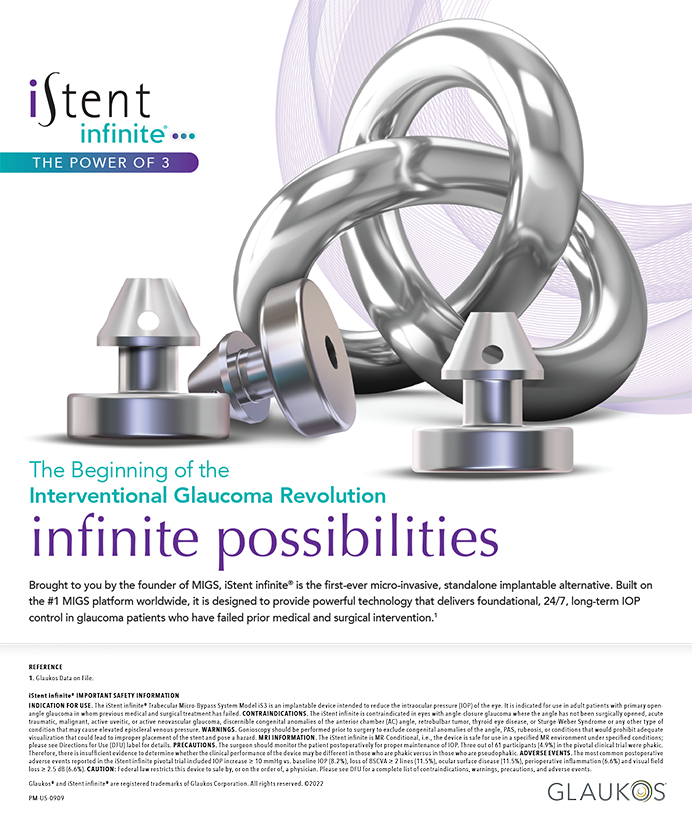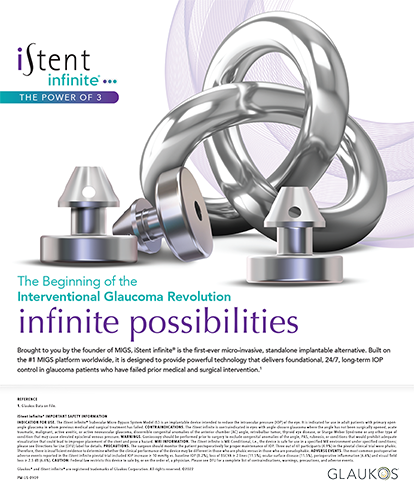
Some things in life we remember more vividly than others—fond memories, monumental decisions, milestones, conversations that have had a lasting impact. For me, one memorable conversation was an exchange over coffee with a close male colleague in whom I have a huge amount of trust and whom I admire greatly. I remember being excited about collaborating with him at an educational event that I had hoped to be the highlight of the quarter. During our conversation, I suggested that we add a female speaker to the panel because, in the history of this event, there had yet to be a nominated female guest speaker.
I will never forget the instantaneous manner in which he turned to me and said, “I choose people based on a meritocracy.” His comment held no malice, but by his tone, I knew it was the end of the conversation. I remember feeling a flush of heat hit my face, my neck go red, and my mouth go dry as I uttered, “Oh … of course it’s a meritocracy. I wouldn’t have it any other way.”
I was stung. I felt so embarrassed by the implication that this male colleague thought that I wanted to put a woman on the panel just because she was … a woman. I found myself questioning why I even thought that it was my place to make suggestions for the panel. I clearly had no understanding of how to select people to be on a panel of that caliber. I went home feeling deeply unsettled. In an instant, I had become an impostor.
WHAT IS IMPOSTOR SYNDROME?
Impostor syndrome can be defined as doubting one’s ability and harboring an internalized feeling of being a fraud in the face of objective evidence that clearly suggests otherwise. It is known to exist in people of both sexes, but its prevalence can be disproportionately high in women. Alarmingly, this syndrome can be crippling, and most importantly, both men and women exhibit unconscious gender bias that can inadvertently and innocently contribute to impostor syndrome.
We can break this cycle by being aware of impostor syndrome, communicating and acting with intention, designing systems free of inherent gender bias—which goes a long way in acknowledging that women represent 50% of the world’s ability—and ensuring that this talent pool is not ignored.
Let’s break down impostor syndrome. It is a toxic psychological pattern. Individuals who experience it doubt their own talents, accomplishments, and intelligence even when objective measures support their achievements and point otherwise. Two psychology professors, Clance and Imes, coined the term impostor syndrome in 1978 and hypothesized that women are more susceptible than men to experiencing it because success for women is contraindicated by societal expectations and preconceived self-evaluations.1
The inherent problem in this terminology, however, is that it places the onus of responsibility to fix the problem squarely on the individual. It is imperative we recognize that self-limiting beliefs are fostered by and are the end product of systemic conditioning and inherent gender bias over a lifetime.
RISK FACTORS
Impostor syndrome is pervasive, affecting about 70% of all individuals.2 We live in a complex ecosystem of gestures, words, symbolism, and actions that reinforce these destructive thoughts.
Impostor syndrome has been described to be experienced more often by individuals who:
- Have overprotective parents with exceedingly high expectations;
- Take on advanced coursework and pursue graduate degrees;
- Are surrounded by high achievers;
- Are the first in a generation, ethnicity, or minority group to achieve a certain accomplishment;
- Identify with a minority group; or
- Define success or competence in one of five ways (see Five Maladaptive Definitions of Success).
Five maladaptive Definitions of Success
No. 1: The perfectionist—a person who does not accept any standard short of perfection
No. 2: The expert—a person with comprehensive and authoritative knowledge of or skill in a particular area to the extreme
No. 3: The naturally talented—a person with an innate gift for a specific activity who demonstrates immediate skill with little to no practice
No. 4: The soloist—a person who does everything alone
No. 5: The superhuman—a person who strives to achieve, rescue, and fix everything
Other studies report that men are more likely to attribute their success to their own innate ability and talent, whereas women are more likely to attribute their success to their hard work to get there. This is a crucial difference in philosophy. In other words, women are more likely to explain away their success—“I had help along the way,” or “It was the team, not me,”—rather than take ownership of their success. Conversely, men are more likely to attribute failure to their lack of interest in work, whereas women faced with failure are more likely to internalize their sense of shame and blame themselves and their lack of ability.
EFFECTS OF IMPOSTOR SYNDROME
Impostor syndrome is associated with high rates of depression, anxiety, and burnout and an inability to sleep and focus.3 It is known to affect individuals with certain personality traits such as the following.
The procrastinators. These individuals frequently put off doing a task because they know it’s not going to meet the impossibly high standard that they set for themselves.
The overpreparers. These individuals spend a disproportionately huge amount of time on a task versus what is necessary in order to achieve a successful outcome.
The hesitant contributors. These individuals may hold back their ideas or may not nominate themselves for a position because they feel that they have no right to belong.
EXAMPLES IN OPHTHALMOLOGY
A critical, evidence-based review of the literature on unconscious gender bias reveals many examples in medicine and ophthalmology.
Letters of recommendation. In 2009, the University of Arizona reviewed 300 letters of recommendation for male and female medical faculty and compared the language contained within.4,5 Letters of recommendation for men were 16% longer on average and 2.5 times more likely to include ringing endorsements. Men’s letters were also more likely to mention their ability or achievements, career, and research, whereas women’s letters were seven times more likely to include descriptions of personal characteristics irrelevant to the application. Women’s letters were also twice as likely to include negative comments about personality and were also 50% more likely to use grindstone adjectives such as “hard worker” rather than to describe her ability. It is vitally important to recognize that the individuals writing these letters of recommendation did not purposefully write in a different way or use different criteria for their male and female candidates. This is a powerful example of systematic inherent bias.
Resident applications. In 2019, another group reviewed the 2017 and 2018 ophthalmology residency applications for a medical school in the United States.6 There were equal numbers of male and female letter writers. The researchers also accounted for the same baseline characteristics of the candidates, including sex, grade point average, and the numbers of honor awards and academic activities, yet they still concluded that the same types of language bias were present in the applications as were found in the 2009 study.
Sadly, not much changed between 2009 and 2019. We still have so much to be cognizant of.
Positions of power. Today, women have greater access than ever to educational opportunities, and since the 1970s, more women have been pursuing business, law, and medical degrees. These changes, however, have not translated into a commensurate increase in the number of women in positions of power. This is in itself problematic. We fail to recognize that there are hidden barriers to access to these positions in medicine—just as in other fields of professional practice—that unintentionally preclude women from holding more positions of power. The notions of quotas and targets to increase female engagement and presence in these positions are frequently debated. Regardless of how one might feel about the concept, it is clear that we as a profession perform unbiased selection so poorly, unfortunately, that gender quotas are often seen as a necessary crutch for many organizations to formally consider women of merit for elevated positions. It is imperative that we address head-on these gatekeeping practices that promote the same types of individuals for positions of power year in and year out.
One of the most famous examples of such gatekeeping practices was published in 1997. Two Swedish immunologists noticed that significantly more women were completing scientific PhDs but were only half as successful as their male counterparts in securing postdoctoral fellowships. The immunologists asked the Swedish Medical Research Council for permission to study its evaluation practices to determine if men and women might be being treated differently. Initially, the institution refused because they were convinced that their processes were based on pure meritocracy and were gender blind. It took 2 years and a court order for access to this information to be granted. What they found shocked the overwhelmingly male scientific committee: Women did not have to be twice as productive in the scientific literature as men; they had to be 2.5 times more productive in order to achieve the same score. When translated into modern work equivalents, women had to publish the equivalent of three articles in Nature or Science, which have impact factors of 41 and 42, respectively, or publish 20 articles in a journal with an impact factor of 3—nearly a decade-long body of scientific research more than men—simply to be scored equally to their male colleagues.7 This is a striking example of the fact that, despite our desire to the contrary, scientific reviewers have difficulty judging scientific merit independent of sex. Our systems are much more fragile than we think in their ability to eliminate gender bias.
The use of professional titles. In 2017, a US academic center published the rates of gender-based introductions at conferences.8 The study found that women were more likely to be introduced by their first names and less likely by their professional titles than men. A similar study at another US academic center compared the use of titles during internal medicine grand rounds.9 The researchers reported that women introduced male guest speakers by their professional titles 95% of the time, yet men introduced female speakers by their professional titles only 49% of the time.
The consistent use of professional titles should not be limited to the podium, and it is important that we be aware of using proper titles equally for both sexes when introducing the doctor to the patient, in the break room with other colleagues, or in written communication.
TAKING ACTION
Impostor syndrome is insidious, subconscious, and it occurs daily. It is important to understand that individuals cannot share their way out of impostor syndrome, and the onus of responsibility should not be on the individual. Talking about it is a great first step, but the hard work starts thereafter. A systematic deconstruction of the destructive behaviors, gestures, actions, and words used in our ecosystem is required to untangle the cognitive mindset and reverse the toxicity in which women are expected to flourish. It is important that all individuals consider it their responsibility to combat impostor syndrome.
Step No. 1: Acknowledge that impostor syndrome exists and evaluate its impact. How many of us have thought about asking a female colleague, “Have you ever experienced the phenomenon known as impostor syndrome? It’s come to my attention that this is an issue. If you have, I’m open to talking about it.” Back up your words by independently evaluating your own systems for hiring, promotions, and even making sure that surgical cases are divided objectively and equally among residents and fellows.
Step No. 2: Change the way we speak about women. It is not as simple as being polite, and it’s not enough simply to avoid being rude. Make sure you consistently use proper honorifics between sexes. Consider the tone, content, and language in your reference letters. The key is to refer to women’s qualifications and professional attributes rather than their personal characteristics and physical attributes.
Step No. 3: Stop the sexist jokes. It is crucial to understand that junior female colleagues are silenced in these types of conversations. It’s not uncommon for women to hear a sexist joke preceded by, “I’m going to get in trouble for saying this,” or followed by, “You know I’m joking, right?” What those women see is that this individual, who clearly knows the difference between right and wrong, deliberately chooses to say something inappropriate anyway and is exercising a privilege to do so. Women frequently smile and nod for fear of being branded as too sensitive to take a joke. This power differential is exploitative, and it contributes to women’s feelings of exclusion. A boys’ club mentality is more than just hurtful; it is harmful.
Step No. 4: Become an ally and active mentor. Take the time to mention accomplishments because they may be internalizing the opposite. Possible comments include, “I think you nailed that consult today,” and “That was really tricky, but you handled that surgical case today with ease,” and “I was really proud of that paper you published.” Furthermore, if you catch them minimizing their success and attributing it to a team effort or a fluke, for example, stop them and remind them to own their success that was pivotal to the achievement.
Being an active mentor requires taking a real interest in someone’s daily activities and remembering that the power differential is psychologically exhausting; they may not necessarily come forth to discuss their achievements, let alone their fears and failures, which restricts the potential for growth and learning. Women are less likely to highlight their own achievements. Highlighting achievements and removing barriers to feeling comfortable discussing their own accomplishments—and therefore their values too—is important.
Step No. 5: Recognize your own bias. Consider actively nominating deserving women of merit for leadership positions and other opportunities. Be aware that nominating women because they are female is demeaning and devaluing, and it does nothing to improve the ecosystem. Using sex as the sole criterion for a nomination can, in fact, subject women to more criticism.
When an opportunity arises, the process should be that we consider all qualified individuals. The usual suspects, so to speak, will naturally be considered to fill the position, but an active intentional step must be included to consider women and minorities who are equally deserving of that position. Only then does one choose from the extended pool of candidates. This approach ensures that every nominee is a person of merit, and it expands opportunities to achieve true diversity in the organization.
CONCLUSION
After the conversation with my male colleague and my failed attempt to balance the panel in terms of gender, I reflected long and hard about why I was so deeply unsettled that day. I realized that it wasn’t what I had said—that was my impostor syndrome speaking, making me feel like I shouldn’t be assisting in developing that panel. Rather, it was what my colleague had said so casually, “I choose people based on a meritocracy.” This could have meant only one of two things: Either there really were no women who deserved to be on that panel, or, perhaps, my colleague had not taken the time to consider them. In this environment in which we live, it takes deliberate intention, time, and effort to find and nominate women of merit, but it is time well spent.
Even as doctors and scientists, we are not immune to bias. Being aware that unconscious gender bias exists, intentionally changing our words and actions, and designing systems that robustly resist gender bias can help our organizations bring women into realizing their full potential. Otherwise, impostor syndrome will continue to flourish, and we lose out on half of the world’s talent, skill, and expertise.
1. Clance PR, Imes SA. The imposter phenomenon in high achieving women: dynamics and therapeutic intervention. Psychotherapy: Theory, Research & Practice. 1978;15(3):241-247.
2. Sakulku J, Alexander J. The imposter phenomenon. International Journal of Behavioral Science. 2011;6(1):73-92.
3. Fraenza CB. The role of social influence in anxiety and the imposter phenomenon. Walden University. Online Learning. 2016;20:2.
4. Trix F, Psenka C. Exploring the colour of glass: letters of recommendation for female and male medical faculty. Discourse and Society. 2003;14(2):191-220.
5. Madera JM, Hebl MR, Martin RC. Gender and letters of recommendation for academia: agentic and communal differences. J Appl Psych. 2009;94(6):1591-1599.
6. Lin F, Oh SK, Gordon LK, Pineles SL, Rosenberg JB, Tsui I. Gender-based differences in letters of recommendation written for ophthalmology residency applicants. BMC Med Educ. 2019;19(1):476.
7. Wenneras C, Wold A. Nepotism and sexism in peer-review. Nature. 1997;387(6631):341-343.
8. Huang CC, Lapen K, Shah K, et al. Evaluating bias in speaker introductions at the American Society for Radiation Oncology annual meeting. Int J Radiat Oncol Biol Phys. 2021;110(2):303-311.
9. Files JA, Mayer AP, Ko MG, et al. Speaker introductions at internal medicine grand rounds: forms of address reveal gender bias. J Womens Health (Larchmt). 2017;26(5):413-419.




